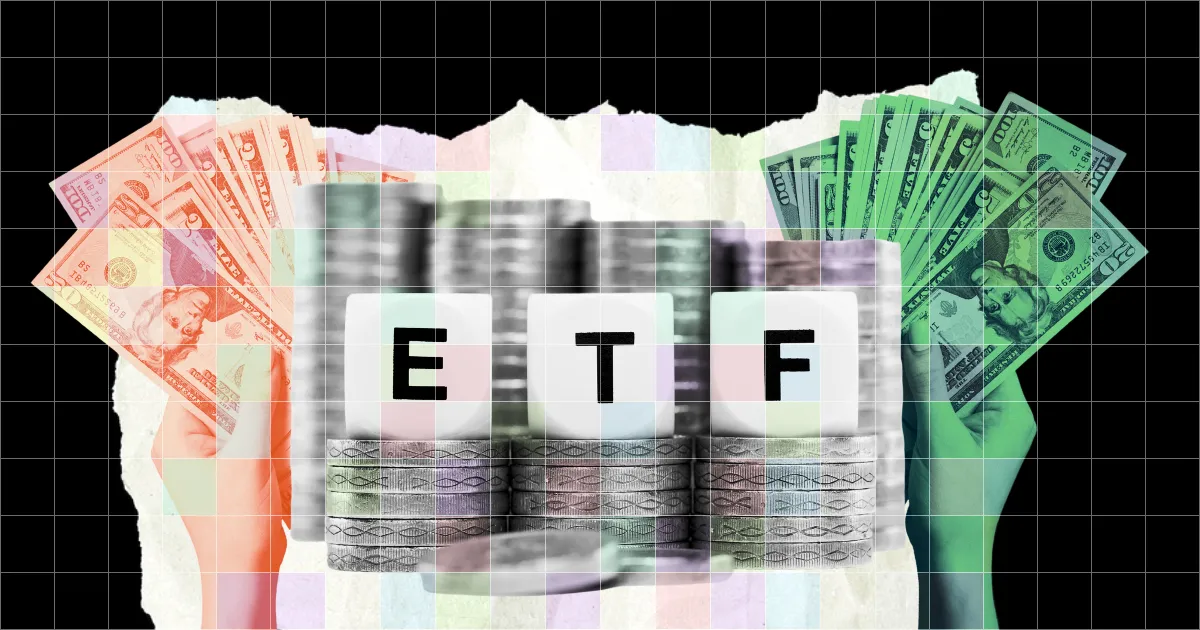XRP ETF Prospects Dimmed By Abundant Supply And Limited Institutional Adoption

Table of Contents
Abundant XRP Supply: A Market Saturation Risk
XRP's large circulating supply presents a significant challenge to its price stability and, consequently, the viability of an XRP ETF. The sheer volume of XRP in circulation directly impacts its potential for price appreciation. Let's examine this further:
-
Total XRP supply and its implications for price appreciation: With a total supply of 100 billion XRP, a substantial portion of which is already in circulation, the potential for significant price increases is arguably constrained compared to cryptocurrencies with more controlled supply mechanisms. This large supply dilutes the value of each individual XRP token.
-
Comparison with other cryptocurrencies with more controlled supply: Bitcoin, for instance, has a capped supply of 21 million coins, making it a deflationary asset. This scarcity contributes to its value proposition and attracts institutional investment. Ethereum, while not having a fixed supply, has a significantly smaller circulating supply than XRP.
-
Potential for price deflation due to high supply: The large pre-mined supply of XRP creates the risk of persistent price deflation, as new tokens entering the market could outweigh demand, putting downward pressure on the price.
-
The impact of XRP's pre-mined nature on investor confidence: The fact that a large portion of XRP was pre-mined raises concerns among some investors regarding its distribution and potential for market manipulation. This lack of transparency can hinder investor confidence and negatively impact the demand for XRP.
Further Detail: The unlocking of previously held XRP also exerts pressure on market dynamics. Significant releases of previously locked tokens can lead to sudden price drops, further destabilizing the market and deterring institutional investors seeking price stability.
Limited Institutional Adoption of XRP
Unlike Bitcoin or Ethereum, XRP has seen relatively limited institutional adoption. Several factors contribute to this slow uptake:
-
Regulatory uncertainty surrounding XRP and its impact on institutional investors: The ongoing SEC lawsuit against Ripple Labs significantly impacts institutional investors' appetite for XRP. The uncertain regulatory status deters many large players from investing due to potential legal and compliance risks.
-
Lack of robust infrastructure for institutional XRP trading: Compared to Bitcoin and Ethereum, the infrastructure supporting institutional-grade XRP trading remains underdeveloped. The lack of sophisticated trading platforms and custody solutions makes it challenging for large institutions to efficiently manage their XRP holdings.
-
Comparison of XRP's institutional adoption rate to other cryptocurrencies: The institutional adoption rate of XRP lags considerably behind that of Bitcoin and Ethereum, indicating a lack of trust and confidence among institutional investors. This low adoption rate directly affects the demand for an XRP ETF.
-
Analysis of current institutional holdings of XRP: While some institutional investors hold XRP, their participation remains minimal compared to their involvement in other cryptocurrencies. This lack of significant institutional backing hampers the demand for an XRP-based ETF.
Further Detail: While there is limited publicly available data regarding specific institutional holdings of XRP, the absence of significant announcements from major financial institutions underscores the overall lack of large-scale institutional investment.
The Ongoing SEC Lawsuit and its Ripple Effect
The ongoing SEC lawsuit against Ripple Labs casts a long shadow over XRP's future and the prospects of an XRP ETF.
-
Summary of the SEC's allegations against Ripple: The SEC alleges that Ripple sold XRP as an unregistered security, violating federal securities laws.
-
Potential outcomes of the lawsuit and their effect on XRP's price and ETF prospects: A ruling against Ripple could severely damage XRP's price and effectively kill the chances of ETF approval, at least in the near term. A favorable ruling, conversely, could significantly boost XRP's price and increase the likelihood of ETF approval.
-
Analysis of the legal arguments presented by both sides: Both Ripple and the SEC have presented compelling legal arguments. The outcome hinges on the court's interpretation of the Howey Test and its application to XRP's unique characteristics.
-
Impact on investor sentiment and trading volume: The uncertainty surrounding the lawsuit has significantly impacted investor sentiment and trading volume, creating market volatility and further hindering the case for an XRP ETF.
Further Detail: The ongoing uncertainty makes it highly improbable that an ETF provider would pursue approval until the SEC lawsuit is resolved. The regulatory clarity provided by a final decision, regardless of the outcome, is a prerequisite for ETF consideration.
Regulatory Hurdles for XRP ETF Approval
Even if the SEC lawsuit ends favorably for Ripple, significant regulatory hurdles remain for XRP ETF approval.
-
SEC’s scrutiny of cryptocurrencies and their suitability for ETF status: The SEC has historically been highly cautious about approving cryptocurrency ETFs, citing concerns about market manipulation, volatility, and investor protection.
-
Comparison with the approval process for other crypto ETFs: The approval process for other crypto ETFs, such as Bitcoin and Ethereum ETFs, has been arduous and lengthy, highlighting the challenges faced by XRP.
-
Requirements for an XRP ETF to meet regulatory compliance: An XRP ETF would need to demonstrate robust compliance measures to address the SEC's concerns regarding market manipulation, investor protection, and custody solutions.
Further Detail: Changes in the regulatory landscape could impact the prospects of an XRP ETF. A more crypto-friendly regulatory environment could improve the likelihood of approval, while stricter regulations could further delay or even prevent its approval.
Conclusion
The prospects for an XRP ETF are clouded by several significant challenges. The abundant supply of XRP, its limited institutional adoption, and the ongoing SEC lawsuit all present substantial obstacles to approval. These factors create a high degree of uncertainty surrounding the future of XRP ETFs.
Key Takeaways: The path to an XRP ETF is fraught with hurdles, primarily related to XRP's supply dynamics, limited institutional acceptance, and the unresolved SEC lawsuit. These issues raise considerable concerns about price volatility and regulatory risk.
Call to Action: While the future of XRP ETFs remains uncertain, staying informed about regulatory developments and market trends is crucial for investors. Continue to research the XRP ETF landscape and its potential, carefully weighing the risks and opportunities involved before making any investment decisions. Further analysis of XRP's fundamentals and the evolving regulatory environment is necessary for a comprehensive understanding of the XRP ETF prospects.

Featured Posts
-
 Cornilles Vs Babouins Qui Possede Les Meilleures Aptitudes Geometriques
May 08, 2025
Cornilles Vs Babouins Qui Possede Les Meilleures Aptitudes Geometriques
May 08, 2025 -
 Desetta Pobeda Za Vesprem Shokantna Pobeda Nad Ps Zh
May 08, 2025
Desetta Pobeda Za Vesprem Shokantna Pobeda Nad Ps Zh
May 08, 2025 -
 Rising Taiwan Dollar A Catalyst For Economic Overhaul
May 08, 2025
Rising Taiwan Dollar A Catalyst For Economic Overhaul
May 08, 2025 -
 The Crucial Role Of Middle Managers In Organizational Effectiveness
May 08, 2025
The Crucial Role Of Middle Managers In Organizational Effectiveness
May 08, 2025 -
 Stream Los Angeles Angels Baseball Games Cable Free Options For 2025
May 08, 2025
Stream Los Angeles Angels Baseball Games Cable Free Options For 2025
May 08, 2025
